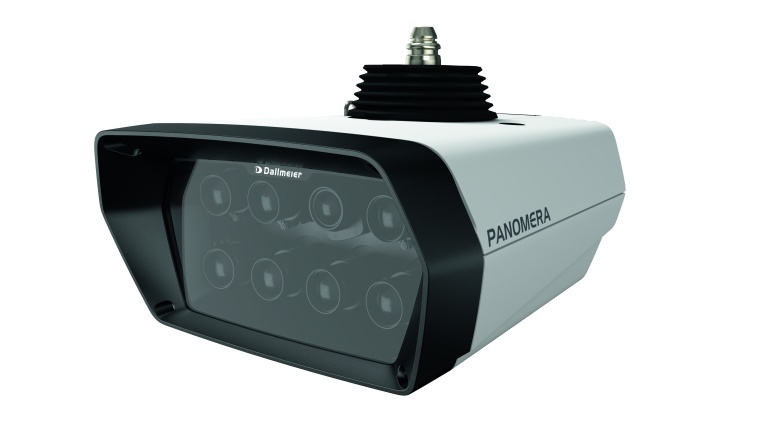Challenge for Stadium Crowd Management: Stormy Young Males
Excessive emotion brings fans storming the pitch, igniting detonators and pyrotechnics in stadiums.

Increasing staff shortages and regulatory requirements are causing headaches for organizers of many events such as concerts, festivals or football matches. With the use of the right video technology, however, stadium operators can effectively manage their crowds, reduce fines and increase the safety of fans, players and staff.
The relief after the forced Covid-19 infused abstinence was very welcome. Over the last few months, football fans worldwide have been allowed to watch football matches live in stadiums again, and to cheer on their favorite team without significant pandemic restrictions, such as a limited number of seats and social distancing in the stadiums. However, the excessive emotion this brings with it highlights almost forgotten challenges, such as fans storming the pitch during or after a match, the ignition of detonators and pyrotechnics or the unfortunate notorious racist insults.
Stormy Young Males and the Lack of Stewards
Many stadium operators observe that it is often young male adults who are just 18 years old or slightly older who, besides their ‘normal’ rowdy adolescent boisterousness, engage in offensive or even criminal behaviour. The pandemic restrictions have certainly added to the issues as this demographic group have not had the opportunity to let off steam by going out to bars and clubs. Now they are adults, possibly under the influence of alcohol or drugs, they get carried away by the atmosphere of the crowd in the stadium and do foolish things.
Another problem is the lack of stewards. The situation is similar in all European countries: in the UK, quite a few returned to their homes abroad during the lockdown measures of the pandemic or have simply looked for other jobs. Those who are deployed in the regular staff’s absence are often only partly experienced or not sufficiently trained.
Pitch Invasions: A Very Tight Time Window
Such circumstances favor one of the biggest problems of crowd management, namely pitch invasions. From single ‘streakers’ to hundreds or potentially even thousands of fans storming the pitch — a nightmare for every stadium operator, who has almost no chance of keeping an overview of the situation and ensuring the safety of everyone present. However, experience shows that most pitch invasions have the same common signs: fans leaving their seats and forming a crowd at the front of the stands before one person makes the start by storming the pitch, with the rest following them.
In addition to some approaches, such as ‘licensed standing’ where clubs erect railings between each row of spectators to counteract a simple rush to the front, it is also video technology that can have a preventive effect. High-resolution camera systems, equipped with several sensors of different focal lengths (so-called multifocal-sensor systems), deliver a comprehensive overview of the entire event as well as any number of simultaneous zooms by several operators. In this way, the behaviour of crowds and individual groups of spectators can be precisely observed. This gives the security staff and police in the control room a better understanding of the security situation and enables them to order stewards to specific tiers in a very informed and targeted way so that they can take further steps to calm the situation.
The same applies to tumults at the entrance areas when, for example, fans without valid tickets try to gain access to the stadium. Here too, multifocal-sensor systems cover long distances and large areas with considerably fewer screens and help a great deal to improve situational awareness and keep things under control. The key factor is that these systems allow operators and police to understand the overall scene while at the same time being able to check for details in as many areas as needed. They are able to identify and fight trouble at the very point of its origin.
Pyrotechnics and Throwing Objects
Another challenge is igniting and throwing pyrotechnics. Equally dangerous is detonating explosives or fireworks, which can cause injuries to people’s hearing or even creating a mass panic. Throwing objects, such as coins or lighters, is also a common threat. In this case, camera systems are particularly suitable for the detection of such incidents if they cover the entire grandstand area with a sufficiently high resolution (more than 250 px/m according to IEC 62676-4) and a smooth frame rate (30 fps) to obtain recordings that can be used in court.
For effective prosecution, it is also important to be able to quickly investigate if the person is masked when igniting the pyrotechnics or is already elsewhere at the time of detonation. In such cases, stadium operators or the commanding police officer can benefit from video systems that allow large spatial contexts to be captured with as few camera perspectives and screens as possible. This helps effective research and tracking. Digital incident files can also be created by using high-performance video management and control center software, where the associated image, video, and sound recordings, as well as comments, witness statements, etc., can be collected and handed over to the law enforcement authorities. Many clubs report, especially in this context, that fines imposed by the authorities on the clubs are reduced by tens of thousands of euros if they can prove that they are using sophisticated and proven security technology to resolve such incidents and prevent them in the future.
Terrorism and Hostile Reconnaissance
At this point, two further important applications of video technology should be mentioned where it can provide support. In terms of a duty to protect, it is important to use video systems that function smoothly and are up to date, but it is also important to ensure that a video system does not create blind spots that attackers can use to retreat into or entrench themselves without being seen, as was the case in the terrorist attack in Manchester on 22 May 2017. Here it can be useful to rely on 360° or 180° cameras that give an overview of even the most convoluted areas to ensure a complete view of events.
It is equally important to have an immediate overview of other security systems, such as access control, intrusion detection and fire alarm systems. Imminent dangers, for example if a locked door is opened violently, can be reported by the access control system to a higher-level control center software. By intelligently linking the locations of doors and the associated viewing angles from installed video cameras, these systems can issue alarms and operators can immediately verify such alarms with video images and take further action. For example, it is possible to unlock all doors during evacuation measures, to remotely control bollards and to visually verify procedures.
AI vs. Roof Climbers and Other Threats
Besides the challenges on match days, safety is also important when conferences, corporate or other events take place. One trend is so-called ‘urban climbing’ where adventurous people climb stadium roofs, for example, to take selfies and pictures for social media. In these sterile areas, the interaction of video cameras and AI-based object classification software can help to issue an intrusion detection alarm if the system detects a person in this forbidden zone. Security forces can intervene accordingly and resolve the situation.
Camera systems, such as Dallmeier’s patented Panomera multifocal sensor systems, already offer numerous options of how they can meaningfully support crowd management through high-resolution recordings of large spaces. Stadium operators already benefit from sophisticated building and control center systems to control all the security systems via a uniform and intuitive user interface in alert situations. Due to the rapid development of AI-based video analysis, there will be numerous applications in the future that can improve crowd management. These include, for example, the tracking and automatic search of people based on certain characteristics such as the color of their clothing, the tracking of individuals throughout the entire stadium, and predictive analysis of tricky situations before they occur.
Regardless of future capabilities, high-quality camera images will always be at the core of any analytics solution — image quality determines data quality and, in most applications, the human eye is needed to make the final decision.














